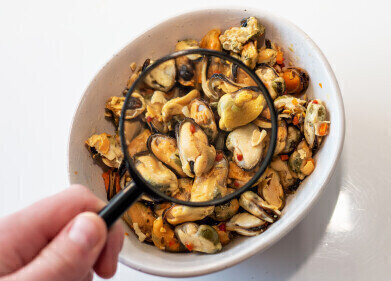GC-MS
Finding a Natural Antifatigue Remedy Using Chromatography
Aug 20 2019
Fatigue is a reaction to work. It is a common physiological reaction when we exercise or work hard and do not get enough time to recover - either through choice or lifestyle. A paper recently published in the journal Nutrients reports on an animal study carried out in Taiwan to test the effects of natural plant extracts on fatigue. So, should marathon runners be chomping down on blackcurrants, marigolds and bilberries to break the 2-hour barrier?
Fatigue - loss of performance
Fatigue is a physiological reaction, the main effect being on the metabolism of energy during muscle activity. We can train our bodies to delay the onset and effect of fatigue, think endurance runners training for a marathon, but eventually fatigue always sets in and we have to stop. Fatigue also happens when we don’t, or can’t, spend any time recovering adequately - why we are always ready for the weekend.
Fatigue in athletes can result in tissue damage and energy imbalance. Recovery from fatigue usually involves rest and recuperation. But a recent study in Taiwan has investigated the effects of plant extracts from the plants Calendula officinalis, Ribes nigrum, and Vaccinium myrtillus, which we might know better as marigolds, blackcurrants and bilberries respectively.
Common plants fighting fatigue
Marigolds are a popular medicinal plant with the flower having many different medical uses. The uses of Calendula include the prevention of infection and helping new tissue grow in wounds. It is also used to decrease swelling in the mouth and throat. It contains many different bioactive compounds like terpenoids, flavonoids and carotenoids.
Similarly, both Ribes nigrum and Vaccinium myrtillus contain compounds linked to positive health benefits. R. nigrum contains vitamin C and phenolic compounds linked to a healthy lifestyle and V. myrtillus has health giving properties that are linked to proanthocyanins and anthocyanins. All three of these plants also have antioxidant properties, and antioxidants can reduce the effects of oxidative stress. So, can these plants affect fatigue?
The mice could swim further
The researchers in Taiwan decided to test the antifatigue properties of all three of the plants combined. The team extracted bioactive compounds from the flowers and analysed the resultant mix using high performance liquid chromatography. The use of chromatography to analyse compounds that affect performance is discussed in the article, Workflow solution for antidoping analysis including steroids in urine with GC-QqQ and GC-HRAM.
The team administered the mix to the mice for 5 weeks, and then assessed any changes in physical condition in the mice using grip tests and swimming tests versus mice that hadn’t had any of the flower mix. The mix was found to contain 1.95 mg of salidroside in 1 g of flower mix. The results indicated that in the treated mice, both grip strength and swim time significantly increased. This shows that the mix had antifatigue activity and could increase exercise tolerance.
Digital Edition
Chromatography Today - Buyers' Guide 2022
October 2023
In This Edition Modern & Practical Applications - Accelerating ADC Development with Mass Spectrometry - Implementing High-Resolution Ion Mobility into Peptide Mapping Workflows Chromatogr...
View all digital editions
Events
Apr 28 2024 Montreal, Quebec, Canada
May 05 2024 Seville, Spain
May 15 2024 Birmingham, UK
May 19 2024 Brno, Czech Republic
May 21 2024 Lagos, Nigeria














